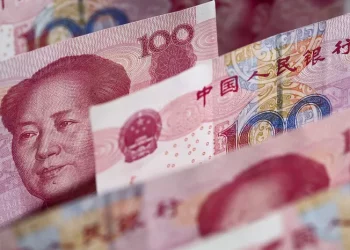The Reserve Bank of India’s (RBI) rate-cutting cycle may run deeper than initially expected, as rising global uncertainties and a soft inflation outlook weigh on India’s economic prospects, economists said.
With the country’s economic momentum under pressure from weak urban consumption and sluggish private investment, the escalating U.S.-China trade war and the looming threat of steep U.S. tariffs could further erode growth. In response, many analysts now anticipate a more aggressive easing path from the central bank.
Hopes remain for a bilateral trade deal with the United States after President Donald Trump temporarily paused his sweeping “reciprocal” tariffs for several countries, including India, while sharply increasing duties on Chinese imports. However, the pause has done little to resolve the broader uncertainty clouding global trade and investment flows.
Nomura economists Sonal Varma and Aurodeep Nandi now forecast that the RBI will lower the terminal policy rate to 5.00%, down from their previous projection of 5.50%. “With growth below potential, falling oil prices and inflation durably aligned to target, policy rates will need to move into the accommodative zone,” they noted.
The RBI on Wednesday cut the benchmark repo rate by 25 basis points to 6% and shifted its stance to “accommodative” from “neutral.” It also trimmed its GDP and inflation forecasts by 20 basis points each, to 6.5% and 4%, respectively.
But many analysts believe the downside risks to both growth and inflation are more pronounced. Nomura expects an additional 100 basis points of rate cuts through 2025, with 25-basis-point reductions projected for June, August, October, and December.
Quantifying the impact of the tariff-related uncertainties remains difficult, RBI Governor Sanjay Malhotra admitted. Still, concerns are growing that the full-year growth outlook may be overly optimistic.
ANZ economist Dhiraj Nim expects GDP growth for the January-March quarter to fall short of the government’s 7.6% forecast and said a downward revision to the RBI’s growth target may be warranted. “Even if reciprocal tariffs are not implemented, the cost to growth from uncertainty and the global slowdown can be sizable,” he said. “If growth falls toward 5.5%, the policy rate could be cut to 5%.”
Economists at ICICI Securities Primary Dealership echoed the sentiment, warning that the drag from trade disruptions could be more severe than expected. “A negative growth surprise that pulls growth below 6% could become a powerful trigger for deeper rate cuts,” said Prasanna A. and Abhishek Upadhyay.
As global trade frictions continue to cast a long shadow, India’s central bank faces mounting pressure to act decisively in defense of economic stability.
Related Topics:























